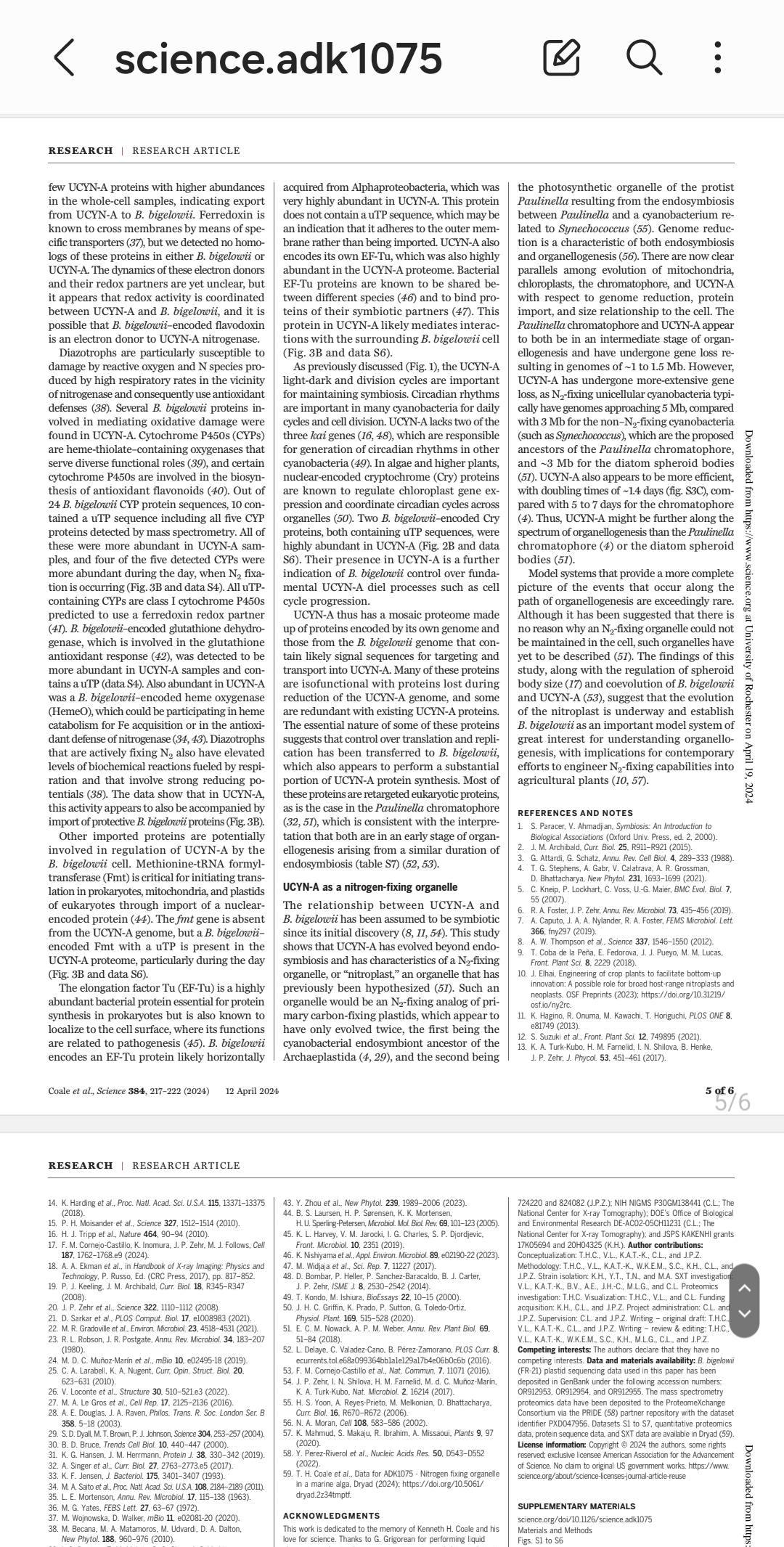Nitrogen-fixing organelle in a marine alga - Tyler H. Coale, et al. https://pubmed.ncbi.nlm.nih.gov/38603509/
but wait, there’s more:
The nitroplast: A nitrogen-fixing organelle A bacterial endosymbiont of marine algae evolved to an organelle https://www.science.org/doi/10.1126/science.ado8571
Wow, this sounds really nifty!!! Anyone got full paper accesss? $30 a pop is a bit pricey, for this humble one.





Sorry its janky idk how to upload a pdf
The second thing you link is just a perspective from someone else, no data.
Not OP but thanks for this! Can’t wait to read it.
Thanks! It’s better than anything I came up with. Also saw this: Share your PDF as a Link (https://pdfdeck.com/), which may or may not work. I would think one could put the PDF on NextCloud (or similar), and then share a link from there to a comment here.
Hey can someone summarize this into lame man terms
What I’ve got is New organelle which evolved from a separate organism similar to mitochondria and it allows alga to process nitrogen
Is that right? And what does this mean for the ecosystem
This is exactly right. The alga has one more organelle that originated as a bacterial symbiont, just like mitochondria and chloroplasts, which is super cool! The alga, Braarudosphaera bigelowii, is a coccolithophore, which is very cool by itself. They are important part of the carbon cycle. And they look supercool - they are covered in calcareous scales and this species is shaped like a dodecahedron!!! https://upload.wikimedia.org/wikipedia/commons/c/cb/Braarudosphaera_bigelowii.jpg
Is this as exciting as it seems? It seems pretty exciting.
Yes. It is very exciting and cool. It already has mitochondria so it’s actually a double endosymbiont if it gets confirmed by others.
If it’s a eukariotic algea, does it also have cloroplasts?
Not in the paper data at least. It does have plastids which I had to look up (been a while since gen bio). Plastids are similar to chloroplasts. So triple endosymbiont actually. Again if data holds to further scrutiny.
I think plastid is the generic term for that organelle family and chloroplasts are plastids specialized for photosynthesis.
So they probably don’t want to state the plastids have a function they havent confirmed or something like thatYou are correct about the definitions but I’d imagine chloroplasts have some relatively standard assays which would have been tried, though this isn’t really my area of expertise.
UCYN-A is the nitrogen-fixer of the alga cell?
UCYN-A (Candidatus Atelocyanobacterium thalassa) is a cyanobacterial symbiont of the unicellular algae Braarudosphaera bigelowii. And yes, it makes N2 into NH3, making that nitrogen fixed and available for B. bigelowii
UCYN-A is the organism. They’re calling it the “nitroplast”.
It’s catchy, all the kids will know it by heart
Man, assuming I understand this properly, if they had more time to evolve and adapt this on masse we could see some improvements to the marine ecosystem!
mouth agape, pointing to the background






